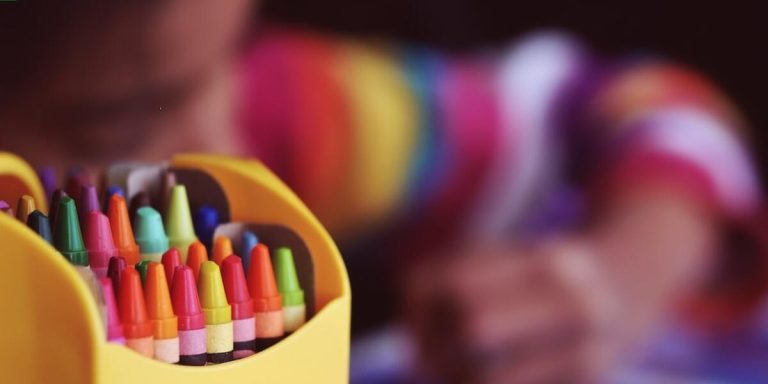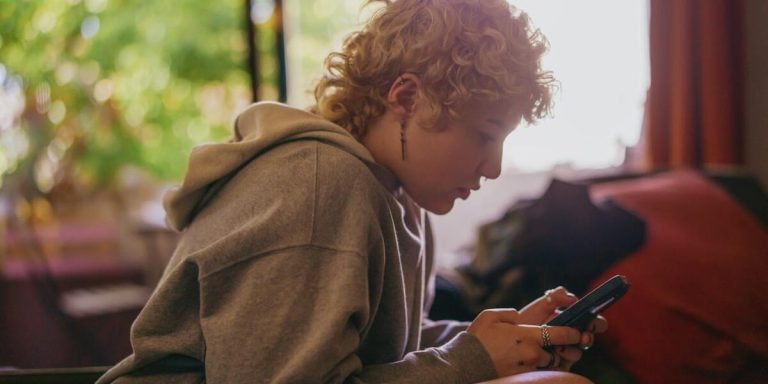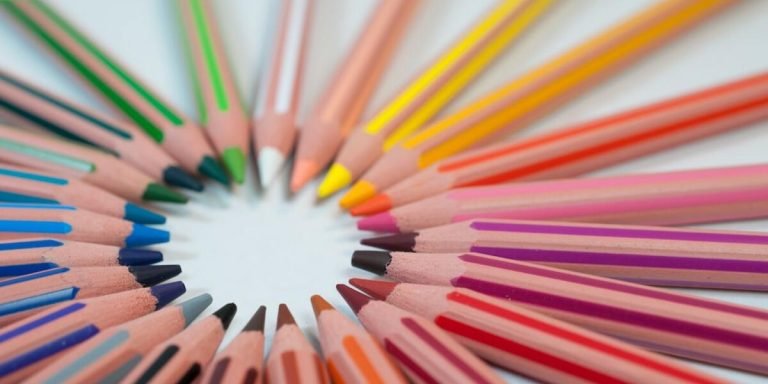Sensory Regulation: A Key Aspect of Childhood Education
In the realm of childhood education, “sensory regulation” holds significant importance. Sensory experiences play a pivotal role in shaping cognitive growth and development among children from early years onwards. It encompasses a wide array of activities that stimulate various senses such as sight, touch, taste, smell, balance and body awareness which ultimately enhance their learning abilities.
However navigating sensory regulation effectively requires special educational resources and support to ensure optimal results for your child’s overall well-being. A robust understanding about this essential facet would enable parents and educators alike to foster an environment conducive to a balanced sensory diet enriching every child’s educational journey significantly even more so for those with special needs.
Did you know?
Did you know? The tactile system, one of the crucial sensory systems in children’s development, matures by the age of 5 to 7 years. This makes early childhood education key for developing a well-rounded tactile experience and subsequent sensory regulation.
Strategies for Enhancing Sensory Regulation in Special Education
“Sensory regulation can be a challenge for children with special needs. In the rapidly evolving landscape of education, integration of technology has shown promising outcomes in addressing this issue. One strategy that educators are beginning to embrace involves using apps and online platforms designed specifically to help those dealing with sensory processing disorders.
Such tools offer interactive activities which engage several senses simultaneously by providing tactile, auditory and visual stimulation. Kids can interact at their own pace, gradually creating associations between different stimuli in ways they find comfortable rather than overwhelming.
Implementing Sensory Diets for Individual Needs
Sensory regulation is a critical aspect of special education that impacts learners’ ability to interact with their environment. Implementing sensory diets, personalized activities designed for each learner’s unique needs, can significantly enhance this process.
Integrating technology into your child’s sensory routine can have profound benefits on their learning journey. Utilizing specially developed applications and digital games act as interactive tools aiding children improve focus and motor skills alongside offering them fun distractions during stressful moments.
Moreover, wearables like weighted vests or fidget spinners allow adjustment based on personal comfort levels due to advancements in smart fabric technologies which respond according to user movements enhancing overall tactile experience.
Innovative tech solutions also enable parents and educators track behavioral patterns thus making it easier tailoring appropriate interventions further supporting student success.
Both online platforms and physical technological aids work harmoniously fostering better active learning environments while meeting diverse classroom requirements more efficiently resulting from constant upgrades reflecting current research findings related to childhood development trends involving brain-body connections impacting academics positively .
Designing Inclusive Classrooms to Facilitate Sensory Integration
Designing inclusive classrooms that encourage sensory regulation has become an essential part of modern special education. As technology advances, so must our strategies to support students with differing needs.
Firstly, it is crucial to understand the pivotal role sensory integration plays in learning and behavior management. Children who have difficulty self-regulating may be hypersensitive or hyposensitive to certain stimuli, which can impede their ability to focus and learn effectively.
Technology presents a vital solution for facilitating improved sensory regulation within special education environments. Mobile devices like tablets offer a wide array of interactive educational applications focusing on incorporating visual elements alongside sounds, movements, touch screens functions- all contributing towards the child’s overall multisensory learning experience.
For example, virtual reality (VR) technologies are emerging as effective tools for active engagement in stimulating rich multi-sensory surroundings where children can interact safely without overwhelming external stimulations from physical classrooms sometimes causing distress among sensitive learners.
Augmentative communication apps amplify verbal expression opportunities amongst non-speaking pupils through pictograms enabling them articulate feelings better thus reducing frustrations stemming from miscommunication; at times leading onto disruptive behaviors hindering class progressions altogether.
Another powerful implementation lies in creating smart classroom settings equipped with light controls adjusting brightness levels according-to student sensitivities aiding concentration capacities remarkably combated by glaring fluorescence often found across conventional school designs proving detrimental especially amidst autistic youngsters possessing extreme light sensitivity issues commonly provoking anger outbursts mostly disrupting lessons totally besides affecting vision too consequentially impairing academic performances significantly!
Technological Advancements Supporting Sensory Regulation
As we delve deeper into the 21st century, technology continues to make profound impacts on various sectors of society, including education. Particularly in special educational resources and support systems, state-of-the-art advancements have provided indispensable tools for enhancing sensory regulation among students with unique learning needs.
Sensory regulation involves managing sensations so that a child can function effectively within his or her environments. Children sensitive to environmental stimuli like sound or light may find it challenging navigating traditional learning spaces without specific strategies in place for dealing with such sensitivities. Technology has aggressively stepped up to play an essential role here by providing innovative solutions designed explicitly around these requirements.
For instance, cutting-edge apps equipped with features like customizable noise levels offer children suffering from sound sensitivity the ability to moderate ambient noise according to their comfort level while studying online at home—or even physically present classrooms incorporating tech-based teaching methods—a sure testament that technological advancement is making strides toward fostering inclusive learning atmospheres everywhere.
These valuable digital platforms aren’t just aimed towards helping learners manage their immediate surroundings; they’re also specifically attuned towards aiding educators and parents alike establish optimal conditions conducive for academic success—proving once more how integrative forms of tech-driven curriculums are revolutionizing childhood education today.
Interactive Software and Apps Tailored for Sensory Processing Disorders
Sensory processing disorders occur when children struggle with receiving and responding to information from their senses. Technological solutions can play a significant role in supporting these youngsters effectively.
For instance, virtual reality (VR) therapy is proving its worth as an effective tool for mitigating symptoms associated with SPD. VR allows educators or therapists to create controlled environments where students can safely practice responses to different stimuli at their pace. This immersive experience encourages learning through repetition without causing undue distress.
Similarly, some applications are now leveraging Augmented Reality (AR) technologies that provide multisensory stimulation which help users navigate real-world scenarios better over time. These AR-based tools offer practical techniques on managing overwhelming situations like crowded places or loud noises – ultimately improving everyday life skills crucial for independent living.
The rise of AI-driven adaptive learning systems too cannot be overlooked within this spectrum of technological support mechanisms for sensory regulation issues in special education contexts today.
These intelligent platforms customize educational content based on each child’s specific needs, ongoing performance data while ensuring frequent adjustments according to evolving abilities of every individual learner involved here.
Wearables and Gadgets Aiding in Self-Regulation
In the realm of childhood education and special needs support, one cannot overlook the importance of sensory regulation. This gradually emerging field has seen significant advancements in recent years, all thanks to technology integration. Wearables and gadgets now play a pivotal role in aiding children with self-regulation.
Imagine wearable devices that render real-time data about your child’s emotional state or stress levels? Such technological wonders exist today – smartwatches equipped with biofeedback features for instance can assist youngsters struggling with anxiety or ADHD issues by monitoring heart rate variability (HRV). Bioresponsive games are another innovative tool making waves within this cohort; these interactive games adjust their intensity based on user’s physiological responses thus promoting self-control and calmness.
Embracing virtual reality is an effective way too in supporting sensory regulation efforts amongst differently-abled learners who find it hard to regulate emotions on day-to-day basis due to overstimulated senses—a common feature associated with Autism Spectrum Disorder (ASD). VR experiences create safe spaces where they can experiment different scenarios without danger or fear, helping improve coping mechanisms through repeated exposure.
Collaborative Approaches to Support Students with Sensory Challenges
In the 2023 landscape of education, it’s critically important to combine technology and collaborative efforts for students with sensory challenges. As we push towards comprehensive inclusion in classrooms across the globe, educators are increasingly realizing that traditional teaching methods may not be conducive for all learners. Hence, there has been a significant shift towards devising strategies tailored to meet unique individual needs.
One such strategy is harnessing technology integration into special education resources and support systems specifically designed for sensory regulation. For instance, interactive digital games can help children refine their gross motor skills or improve eye-hand coordination; virtual reality experiences might provide safe environments where they can explore different senses at their own pace without any potential overstimulation from real-world scenarios.
Moreover, collaboration amongst teachers, educational psychologists as well as speech and occupational therapists have shown tremendous results in this aspect too. This united front helps shed light on student-specific issues more holistically rather than piece-meal solutions which could potentially hinder overall progress due to neglect of interconnected factors affecting learning ability.
To sum up: Technology Integration in Education together with interdisciplinary cooperation provides a potent solution improving both performance & quality-of-life parameters thereby revolutionizing how we perceive ‘special’ school-based intervention models today.
Roles of Multidisciplinary Teams in Personalizing Educational Plans
Personalized education plans (PEPs) have a pivotal role in ensuring students with sensory challenges can flourish acadically and socially. The efficacy of these PEPs, however, relies heavily on the collaborative efforts of multidisciplinary teams comprised of educators, therapists, psychologists and other specialized professionals.
Multidisciplinary teams working together bring diverse perspectives to the table for an inclusive educational approach. For example; occupational therapists might lend their insight into using specific tactile tools that encourage sensory regulation among children struggling with hyper-sensitivity issues whereas speech-language pathologists could provide guidance strategies to enhance communication skills.
In order to maximize effective integration of technology within personalized educational plans for such special needs students,the input from IT specialists cannot be overlooked. These experts are familiar with assistive technologies like visual aids or adaptive computer equipment that aid in making learning accessible,easing classroom participation,and fostering overall engagement,guiding more constructive ways towards incorporating it all into lesson planning.
Parental Engagement and Resources for At-home Reinforcement
Engaging parents in the learning process can be a game-changer for students with sensory challenges. A collaborative environment fosters better understanding and encourages mutual efforts towards overcoming educational hurdles.
Key to this approach is keeping parents informed about what ‘sensory regulation’ entails, not just in theory but practically too. It’s where they gain insights into their child’s unique sensory profile – how it affects their learning abilities and behavior patterns. Understanding these nuances is crucial as it equips them to create an appropriate at-home reinforcement plan that aligns well with school strategies.
Resource sharing becomes equally significant here, especially technology-based ones owing to our current year 2023 digital landscape. Fittingly adapted tech tools aid tremendously by providing engaging platforms for skill development while making it manageable even without any specialized training.
1) Interactive e-books or apps: These offer visual aids or storylines explaining different sensory inputs; hence simplifying abstract concepts.
2) Online Sensory Processing Disorder (SPD) support groups: They provide an avenue of shared experiences and tips from other individuals dealing with similar issues.
3) Virtual reality programs: Such specially designed software mimics real-life situations facilitating rehearsal opportunities to practice response mechanisms comfortably within one’s safe spaces before transitioning those skills outdoors.
These resources boost confidence by demystifying the complexities of sensory regulation processes. They ensure children continuously practice adaptation both inside and outside classrooms, yielding a multitude of benefits.
Conclusion
Understanding and applying sensory regulation in childhood education is not just an added advantage, it’s a necessity. It can play the crucial role of being the missing piece to your child’s puzzle called growth and development. Developing this cognition early on helps children regulate their reactions better, understand themselves more profoundly, resulting in successful learning experiences.
Don’t stop here – keep exploring our website for continual information that caters specifically to educating young minds! We also provide all-rounded support for parents and educators alike because we believe knowledge shared is always multiplied. Remember – you’re shaping tomorrow’s thought leaders today; let us do so together with every necessary tool at hand.







